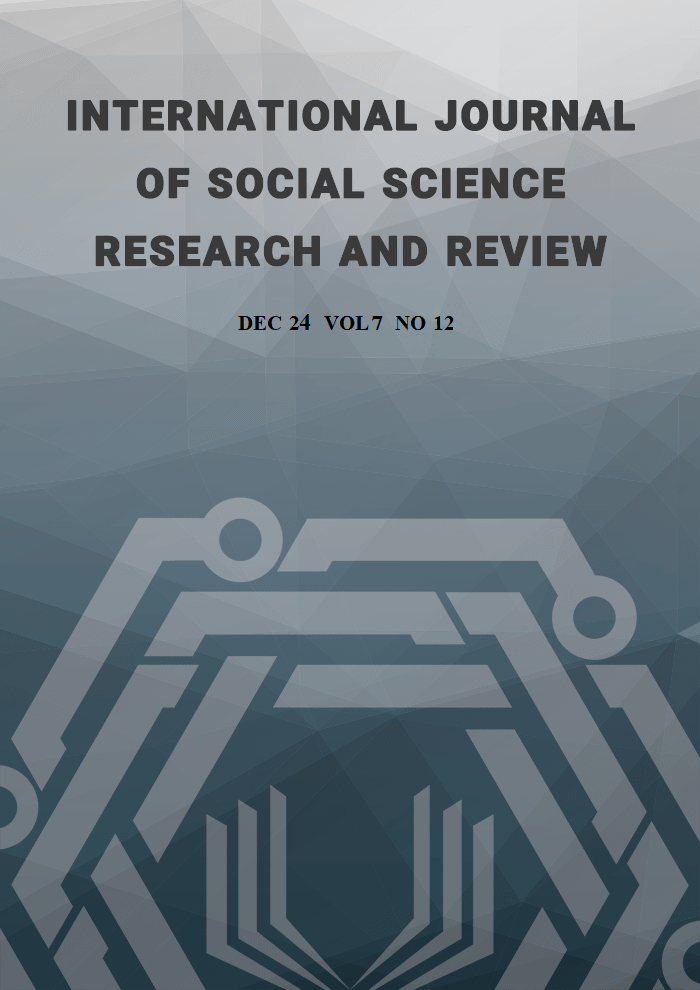The Construction and Application of the Awareness-Execution-Experience Integration Theory
Abstract
Unconscious habits play a significant role in shaping individual behavior and decision-making, often posing obstacles to achieving a healthy and efficient lifestyle. To address these challenges, this study introduces the Awareness-Execution-Experience Integration Theory (AEEIT), designed to facilitate behavior change through a systematic and structured approach. The theory emphasizes four key steps: awareness, choice, execution, and experience, each aimed at helping individuals maximize life efficiency and move towards a more fulfilling life. Drawing from existing psychological and behavioral science research, the AEEIT incorporates the concept of flow experience to create a comprehensive framework for behavior modification. An experimental design is proposed to validate the theory, involving diverse participant groups and employing data analysis to evaluate the outcomes. Although empirical validation is pending, preliminary theoretical analysis suggests that the AEEIT has significant potential to enhance individual behavior awareness, self-regulation, and engagement in flow experiences. The theory offers a novel approach to behavior change, with important implications for personal growth and self-regulation, and opens up new avenues for research in social psychology. Practical recommendations are also provided to help readers apply the theory in their daily lives, with the goal of achieving a healthier and more efficient lifestyle.
References
Berkman, E. T. (2018). The neuroscience of goals and behavior change. Consulting Psychology Journal: Practice and Research, 70(1), 28.
Csikszentmihalyi, M., Nakamura, J., & Csikszentmihalyi, M. (2014). The concept of flow. Flow and the foundations of positive psychology: The collected works of Mihaly Csikszentmihalyi, 239-263.
Fujita, K., & MacGregor, K. E. (2012). Basic goal distinctions. In Goal-directed behavior (pp. 85-114). Psychology Press.
Galla, B. M., & Duckworth, A. L. (2015). More than resisting temptation: Beneficial habits mediate the relationship between self-control and positive life outcomes. Journal of personality and social psychology, 109(3), 508.
Garland, E. L., Gaylord, S. A., & Fredrickson, B. L. (2011). Positive reappraisal mediates the stress-reductive effects of mindfulness: An upward spiral process. Mindfulness, 2, 59-67.
Garland, E. L., Gaylord, S. A., Boettiger, C. A., & Howard, M. O. (2010). Mindfulness training modifies cognitive, affective, and physiological mechanisms implicated in alcohol dependence: results of a randomized controlled pilot trial. Journal of psychoactive drugs, 42(2), 177-192.
Gollwitzer, P. M., & Sheeran, P. (2006). Implementation intentions and goal achievement: A meta‐analysis of effects and processes. Advances in experimental social psychology, 38, 69-119.
Heatherton, T. F., & Wagner, D. D. (2011). Cognitive neuroscience of self-regulation failure. Trends in cognitive sciences, 15(3), 132-139.
Hölzel, B. K., Lazar, S. W., Gard, T., Schuman-Olivier, Z., Vago, D. R., & Ott, U. (2011). How does mindfulness meditation work? Proposing mechanisms of action from a conceptual and neural perspective. Perspectives on psychological science, 6(6), 537-559.
Hou, Y., Xiong, D., Jiang, T., Song, L., & Wang, Q. (2019). Social media addiction: Its impact, mediation, and intervention. Cyberpsychology: Journal of psychosocial research on cyberspace, 13(1).
Liu, X. (2024). Mindfulness intervention for emotional distress. Peking University Press. [刘兴华. (2024). 情绪困扰的正念干预. 北京大学出版社.].
Mark, G., Iqbal, S. T., Czerwinski, M., Johns, P., & Sano, A. (2016, May). Neurotics can't focus: An in situ study of online multitasking in the workplace. In Proceedings of the 2016 CHI conference on human factors in computing systems (pp. 1739-1744).
Peters, J., & Büchel, C. (2011). The neural mechanisms of inter-temporal decision-making: understanding variability. Trends in cognitive sciences, 15(5), 227-239.
Schultz, W. (2015). Neuronal reward and decision signals: from theories to data. Physiological reviews, 95(3), 853-951.
Tang, Y. Y., Hölzel, B. K., & Posner, M. I. (2015). The neuroscience of mindfulness meditation. Nature reviews neuroscience, 16(4), 213-225.
Volkow, N. D., & Morales, M. (2015). The brain on drugs: from reward to addiction. Cell, 162(4), 712-725.
Wood, W., & Rünger, D. (2016). Psychology of habit. Annual review of psychology, 67(1), 289-314.
Copyright (c) 2024 Yinan Zhang

This work is licensed under a Creative Commons Attribution-NonCommercial-NoDerivatives 4.0 International License.
Copyright for this article is retained by the author(s), with first publication rights granted to the journal. This is an open-access article distributed under the terms and conditions of the Creative Commons Attribution license (https://creativecommons.org/licenses/by-nc-nd/4.0/).





